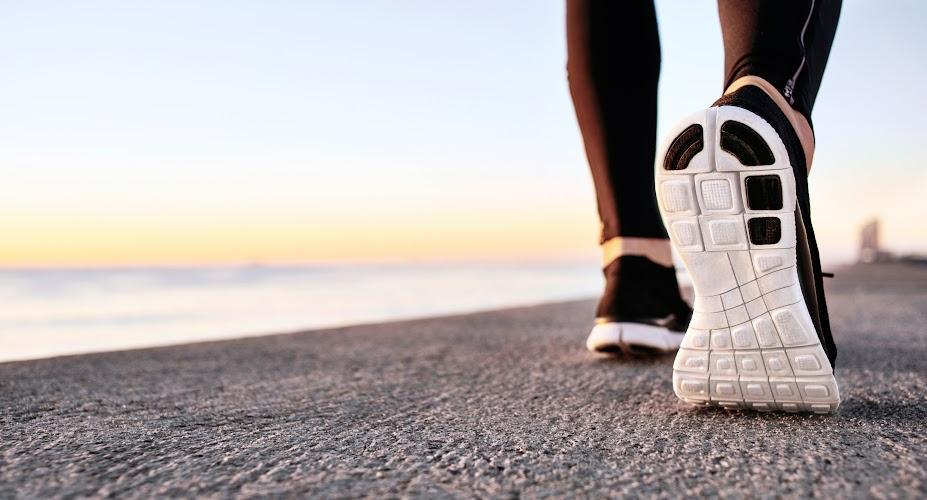
Written by: Dr. Lisa Mitro. Dr. Lisa is a physical therapist that specializes in the prevention and treatment of running injuries, and has helped thousands of runners from across the globe. She's on a mission to inspire and educate runners of all experiences and ages so they can continue running pain free. She is a true believer that movement is medicine. Follow Dr. Lisa on Instagram at @dr.lisa.dpt.
It's becoming more common for runners and athletes to focus on injury prevention, with research supporting new ways to stay healthy all season. If you have experienced an injury, you know how taxing it can be, physically and mentally. I recommend making changes to your weekly routine now to address common movement patterns that can lead to injury.
How do I prevent injuries? Can you really protect your joints from injury?
While you can’t prevent every injury, you can decrease your injury risk with certain strength, stabilization and mobility exercises. It’s important to note that injury prevention is not just exercise — sleep, stress, diet, hydration and rest play a huge role as well.
Injury prevention techniques include:
- Focusing on side-to-side injury differences in the body
- Addressing weaknesses and limitations
- Stability muscle training
- Dynamic warm-up activities
- Cool-down and mobility exercises after activity
- Adequate sleep and nutrition
- Taking rest days
Your foot and ankle should be the first part of your injury prevention journey as they take most of the force of impact with activity. If the foot and ankle are weak or stiff, this can cause more compensations up the kinetic chain, leading to injury.
Four tips to protect the foot and ankle from injury
Tip #1: Address Ankle and Big Toe Mobility
Working on your big toe and ankle joint mobility can help decrease compensations over time, especially if you stay consistent. To improve mobility, make sure you loosen up your ankle and big toe before exercise with a dynamic warm up and add in a cool down that addresses both the ankle and big toe.
Here is one of my favorite warm-ups for the ankle.
Ankle Dorsiflexion Mobility: place your foot on a step or chair and bring your knee over your toes as you bend your knee, and work on your ankle mobility.
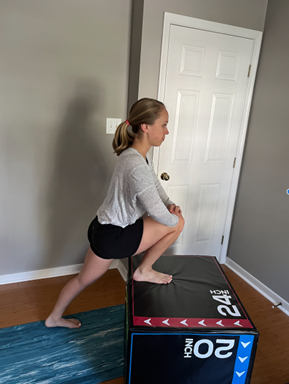

Tip #2: Add in Single Leg Exercises
When you progress your exercises to single leg, it automatically requires more ankle and foot stability. This stability is important to have as a strong foundation for the rest of the body. Adding in single leg exercises will also help you be more aware of any asymmetries in your body. This awareness is key for injury prevention because you start to learn your weaknesses and strengths.
Paloff Press: Stand on one leg and hold a resistance band with both hands at chest height. Slowly push the band out in front and bring in back to your chest.
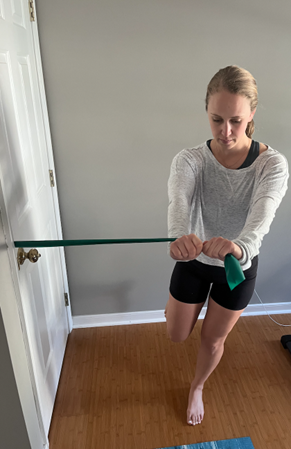

Tip #3: Strengthen the stability muscles in the foot
Did you know your foot has a “core” just like your trunk? In your arch, there are 11 small stabilizing muscles that sit under the plantar fascia. Known as the "foot core," these muscles help to support your foot to keep your arch and gait stable. Having strong feet allows for less compensations throughout the body, especially with dynamic movements like walking, hiking, or running. In addition, when your feet are strong, your joints take less force during impact activities since its more evenly distributed throughout the stabilizing muscles. Use this exercise to strengthen your foot core.
Short Foot Exercise: Standing on both legs, make an arch with your foot without curling your toes and then flatten your foot.
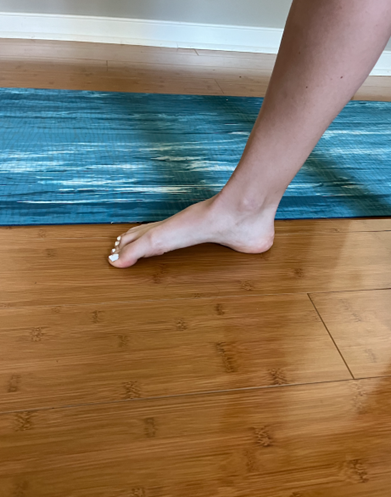

Tip #4: Don't forget the hip
Adding hip stability and mobility exercises can lead to less compensation or poor movement in the foot. If the hip isn’t stable and the knee caves in towards the opposite knee when walking or running, the foot has the potential to move in that same direction. Adding in hip mobility exercises that focus on the joint’s range of motion and hip stability exercises that focus on stabilization in that range of motion can added to any foot and ankle plan to prevent future injury.
Fire Hydrants: standing on one leg, place a resistance loop above your knees and bring one leg out to the side. Then slowly return it back to the starting position.
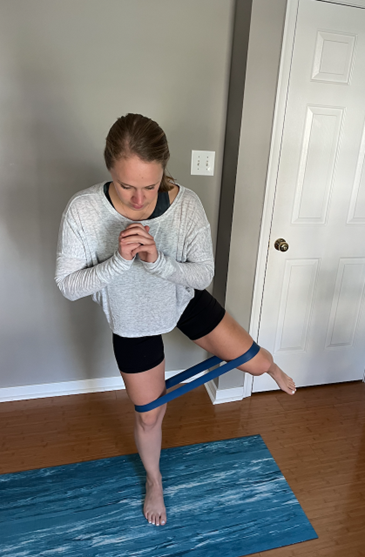

Add these exercises to your regular routine as a starting point for preventing injury in the foot and ankle.






